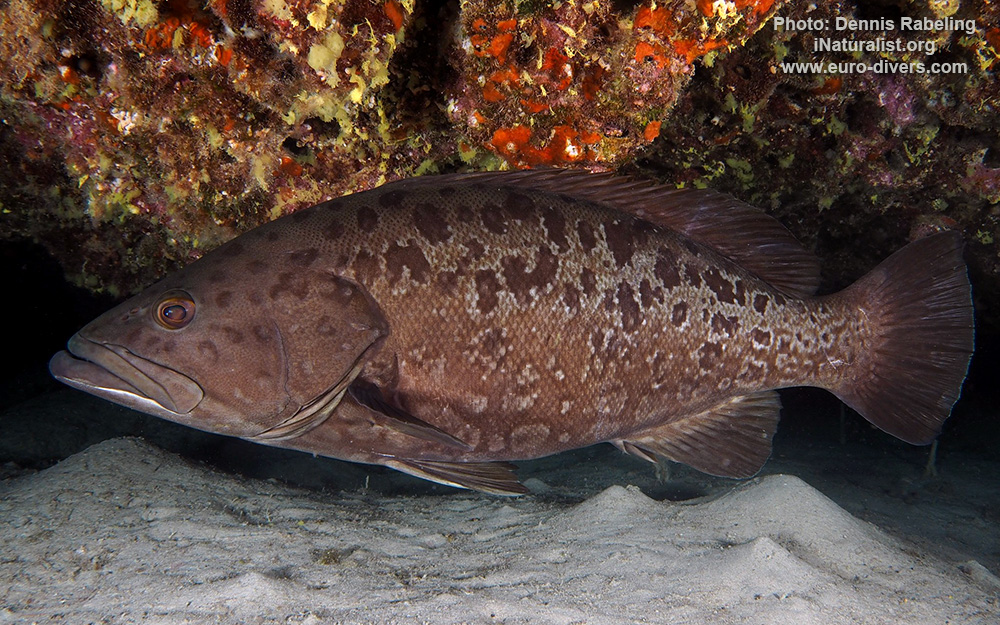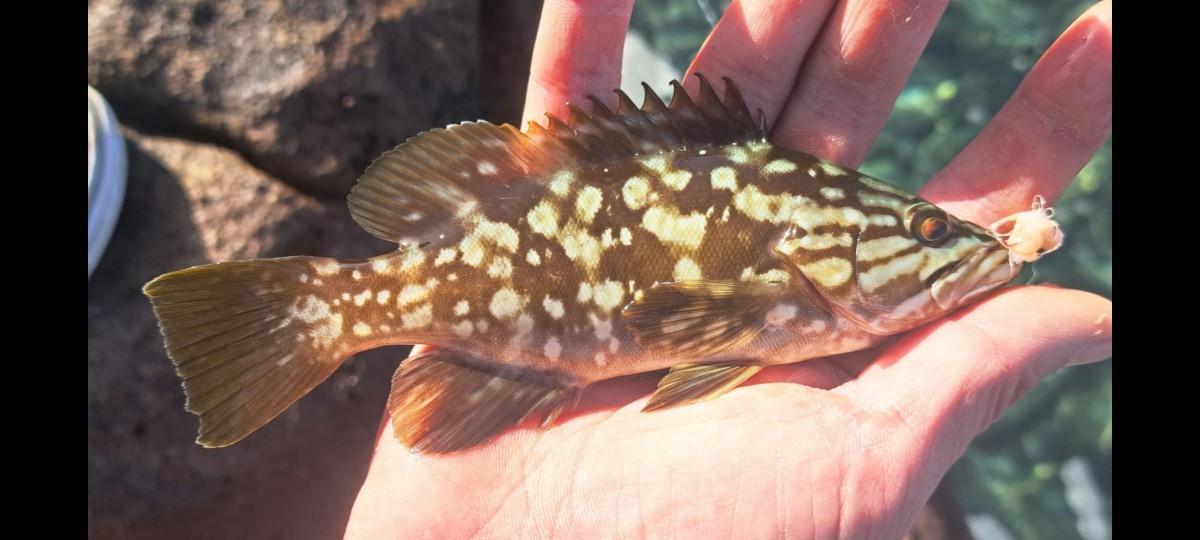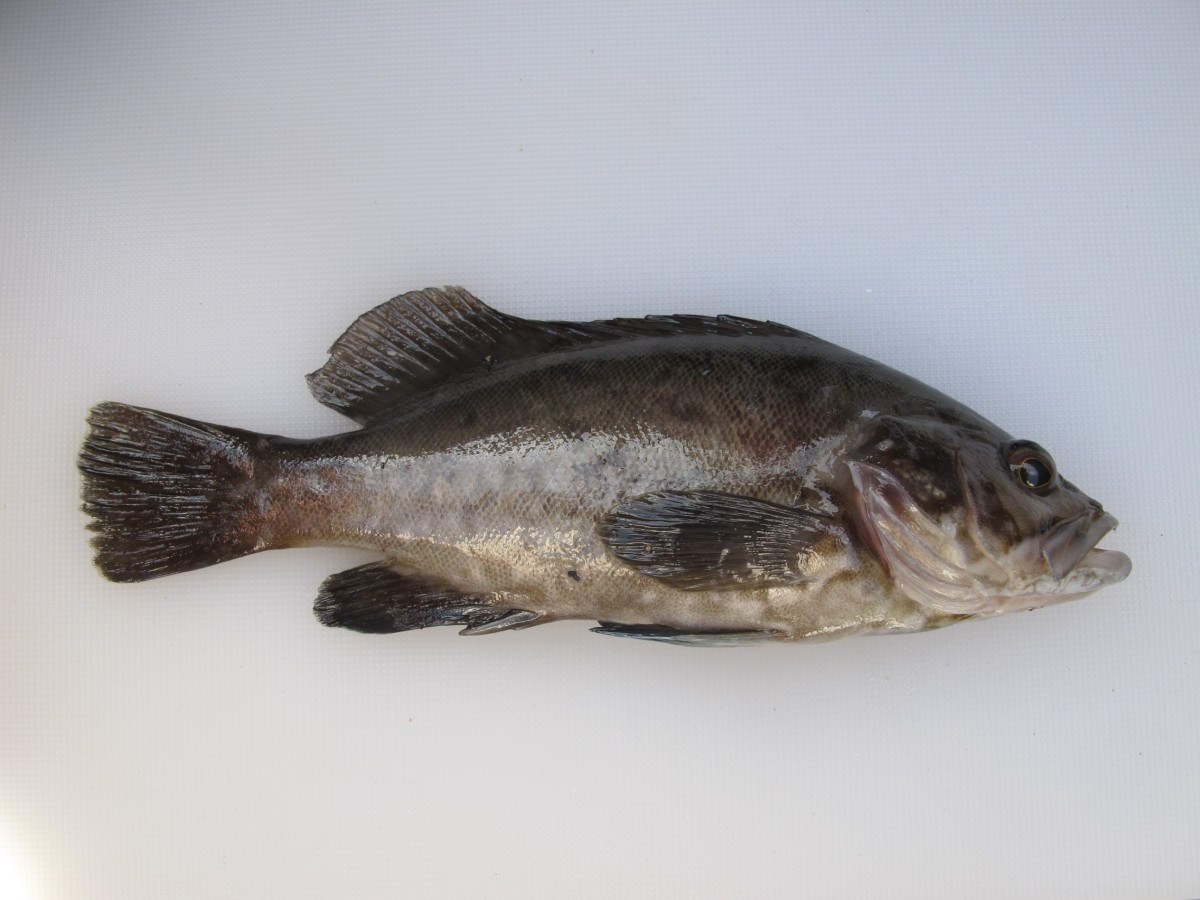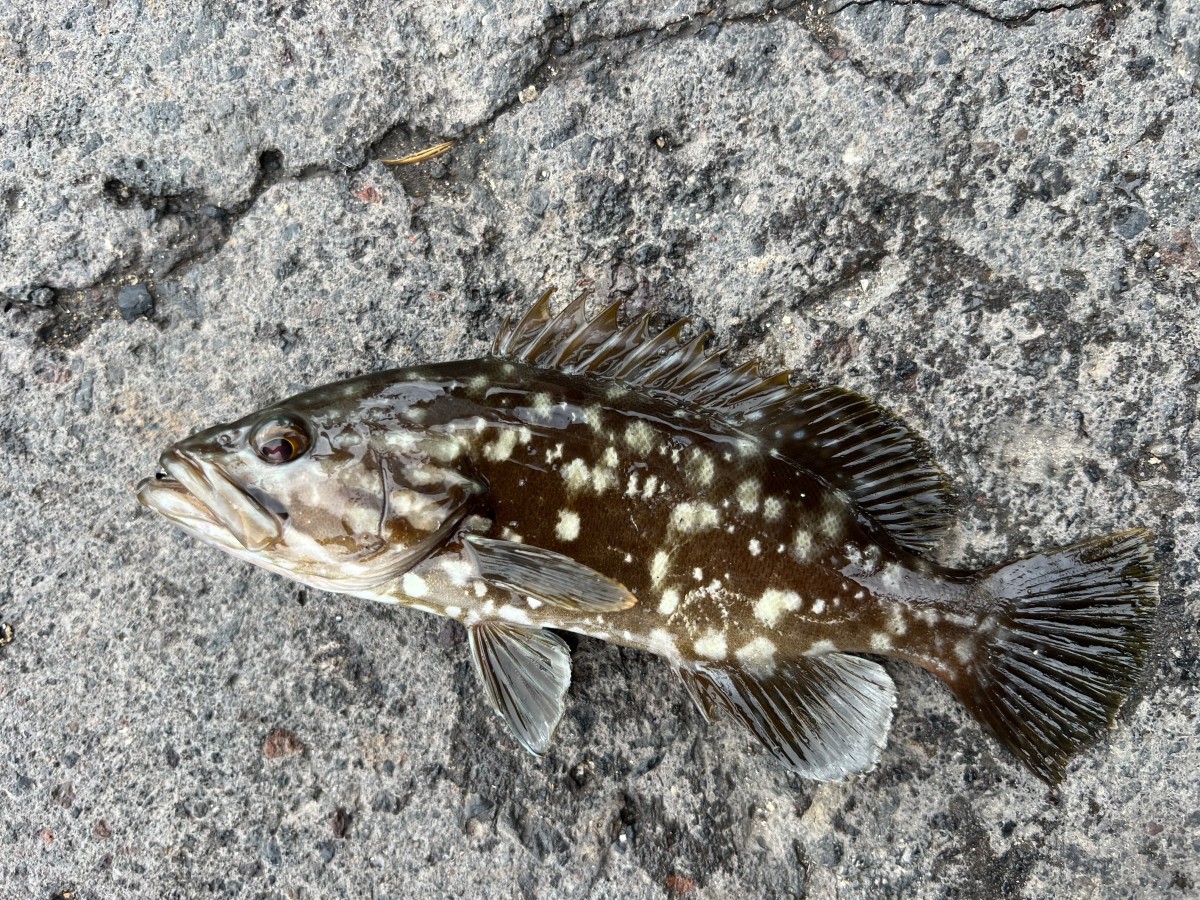Island grouper
(Mycteroperca fusca)

Classification
General data
Mycteroperca fusca, the Island grouper or comb grouper, is a species of grouper from the family Serranidae which is endemic to the Macaronesian Islands in the eastern Atlantic. It is classified as Vulnerable in The IUCN Red List of Endangered Species.
Mycteroperca fusca is a large species which has a brownish or dark grey body colour when adult which is marked with irregular pale blotches and spots as well as a prominent maxillary streak. When stressed M. fusca is capable of reversing its body colour and pattern.
Juveniles are mottled greenish brown, with prominent white spots on the head and the body, with the dorsal, anal and caudal fins have white streaks andtranslucent golden pectoral fins.
The body is oblong and compressed with a depth that is 3.0-3.3 times the standard length. There is a convex interorbital area and it possesses enlarged serrations on the preopercle at its angle, forming a rounded lobe below a shallow indentation on the vertical limb. There are a few small serrations on the subopercle and interopercle. In the juveniles the anterior and posterior nostrils are slightly unequal but in adults with the posterior nostrils are three times larger than the anterior nostrils. The lower jaws protrude well beyond the upper jaws.
The maximum length is 80 cm.
Mycteroperca fusca is an insular species from the Canary Islands, Azores, Madeira and Cape Verde. In 2010, two individuals were reported in the Mediterranean Sea off Israel.














